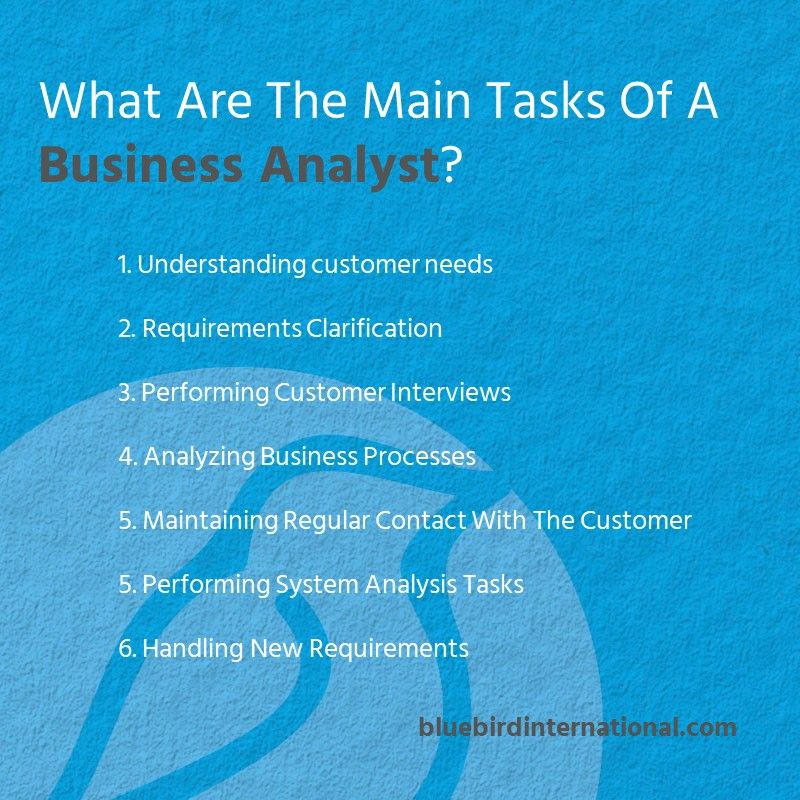What are the responsibilities of a business analyst? What specific skills and abilities do you need to become a successful business analyst?
More...
I had been working as a business analyst for several years. I was in charge of the design of many challenging systems over the years. I really loved this job. I enjoyed the client meetings, the software design tasks, and the day when I finally received the system developed by the software developers and could begin testing it. With all of its beauties and difficulties, it was a truly creative job.
I wrote this blog post to summarize my thoughts on the business analyst role. I'll go over the most important responsibilities of a business analyst, who he/she works with, and what skills he/she'll need to have to be successful.
What Exactly Does An IT Business Analyst Do?
A business analyst is an IT professional who is responsible for designing software. His/her responsibilities are fairly similar to those of a systems analyst, with a few exceptions. (We will deal with these soon.)
The business analyst must be familiar with the operation and processes of the specific business segment or domain. For example, it is common for a business analyst who is thoroughly familiar with the internet banking processes to design an online banking system for a bank.
In terms of tasks, the business analyst is in charge of gathering and documenting the requirements for the system, as well as performing customer interviews, creating functional specifications, and handling new requirements.
What's The Difference Between a Business Analyst And a Systems Analyst?
A business analyst is an expert who is familiar with the business domain. In contrast, the term "system analyst" refers to someone with technical skills.
Here are some examples to help you understand. A system analyst must be able to create a logical data model and be proficient with SQL, whereas a business analyst must thoroughly comprehend client needs right from the beginning in a specific domain. The first customer discussion in the case of a systems analyst (particularly in the case of custom application development) requires special preparation, as the specified domain expertise is not always available from the start.
To get to know more please check our blog post about Business analyst vs. System analyst.

Who Does A Business Analyst Collaborate With?
1. Project Sponsor
The project sponsor is the person who owns the project. He is the one who establishes the project's goals, provides the resources (primarily budget), and is exclusively responsible for the project.
2. Project Manager
In general, the project manager is in charge of the project's implementation, which includes meeting deadlines and budget goals. The project manager is responsible for ensuring that the project scope does not go beyond the set limits. In an ideal situation, the business analyst also takes part in determining the project scope.
3. Users
When developing or updating an IT system, knowing our specific user groups is paramount. Users can be either internal or external, customers, organizations, and suppliers. In my view, for a system to be successful, the business analyst needs to validate the requirements with each stakeholder involved – and, if possible, they should do the same even for functionalities planned for later.
This does not mean, of course, that the approval process should deviate from the procedure set at the beginning of the project. Instead, it means that the business analyst should be aware of all opinions and needs in relation to the system, functionality or solution in question.
4. Developers
In short, developers are members of the software development team (architects, software developers, DevOps engineers, etc.).
One of the most important tasks of a business analyst is to present the needs of the client to the development team in a well-thought-out, clear, and detailed manner. Furthermore, the business analyst is responsible for preparing accurate and fully developed documentation for the development team that is logical and ready to use – and which does not need serious modifications.
5. Testers
The software developed by the development team is checked by the testers. Business analysts frequently participate in the testing of the new system.
Testers mostly rely on system documentation created by the business analyst and approved by the customer.

What Are The Tasks Of The Business Analyst?
1. Understanding Customer Needs
A smart business analyst is primarily concerned with understanding the customer and their needs. They must have a deep understanding of why the system in question is being (further) developed. To do so, understanding the business aspects of the project is even more important than technical knowledge.
A full mapping of customer needs is done by asking question after question. Often, there is a lot of information and past experience behind a customer requirement. It is not enough to understand the stated need, you also need to know why it is important to the customer.

2. Requirements Clarification, Customer Interviews
Firstly, customer needs have to be translated into clear system requirements. To do that, the business analyst reviews and analyzes customer interviews and written materials. It should be mentioned that after processing the written materials received from the customer, it is always worthwhile to validate the requirements produced from them. This can and should be done by the client.
Secondly, preparation is a must for client interviews. Consultation with the client cannot begin with the business analyst being unsure what issues should be discussed, how the current business process is built and what it consists of. Furthermore, in some cases, understanding the appropriate regulations is a prerequisite.
The requirements list compiled as a result of the customer interviews will form the basis of the future IT system. The application must meet these requirements. Many say that the business analyst should look for the whats and not the hows.
3. Analyzing Business Processes
During a client interview, new or old problems related to a process may emerge. "We do it this way because when we were working on it before, we didn't have the opportunity to...". In such cases, it's a good idea to identify the problem and sit down with the client to think it through. Now that we have the opportunity to redesign processes, what would the ideal solution be? This can affect the operation of the company, too. Not only are the processes implemented in the system, but the development of the IT system can also alter – optimize – business processes.
Discovered business problems should be documented. Additionally, if the customer requests it, the business analyst should be able to give suggestions about how specific processes can be changed (if needed).
4. Maintaining Regular Contact With The Client
A business analyst's responsibilities include maintaining regular customer contact from the beginning to the end of a project. This can happen in many different ways in organizations. At the start of the project, the business analyst can create a project organizational chart that lists all individuals involved. This includes both contractor-side and client-side actors. In addition to the organizational chart, you can clarify who communicates with whom, how often, and over what channel all in one place for reference.
The business analyst has a key role, in my opinion, because he or she is the person who understands the client, their needs and intentions the most.
Maintaining client contact requires outstanding communication skills on their part.
5. Performing System Analysis Tasks
During and after customer meetings, the business analyst performs system analysis tasks. The scope of these tasks can differ from one company to another and from one project to the next. However, the results of the system analysis manifest in functional specifications, system design, interface specification, or other documentation for the majority of projects.
Based on the requirements, a good business analyst sets up a system, processes, and IT solutions that perfectly meet the needs and requirements of the customer. All this is done in a way that is clear and easy for the development team to understand.
The following are the most common types of documents:
6. Handling New Requirements
In less-than-ideal situations, new requirements from the client are incorporated into the project without question and the developers start implementing them right away.
This is extremely risky, as it can affect project delivery deadlines, costs, and even the functioning of the IT system. To avoid this, it is recommended to establish a process whereby each new customer request is sent to the business analyst. He or she is able to estimate the resource requirements for the implementation of the new request, and whether it fits in with the application from an organizational point of view. If the project has a dedicated project manager, then obviously he or she should also be informed about the new customer requirement.

The new customer request may turn into a CR (change request), a specification change, or it may result in the customer withdrawing the change request after customer consultation.
Most Important Skills For A Business Analyst
To be a good business analyst, you must master certain skills listed below:

Check out the Main IT Roles in our blog post!
Follow us on LinkedIn and Facebook to be the first to know about new blog posts!
